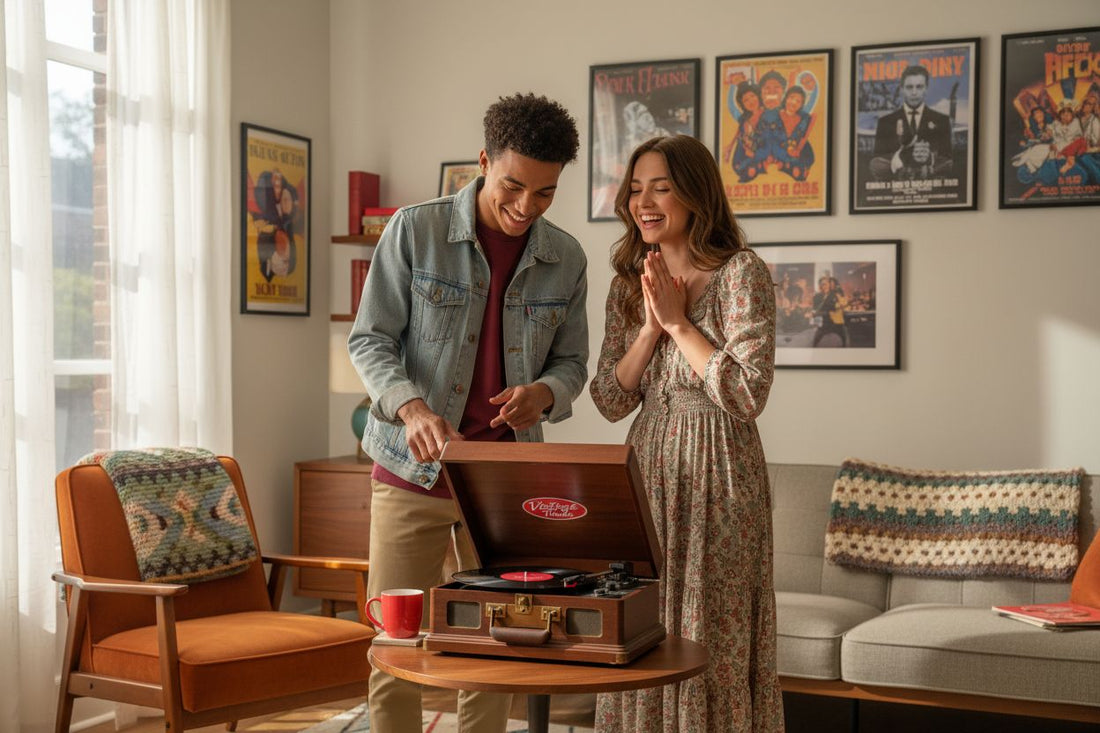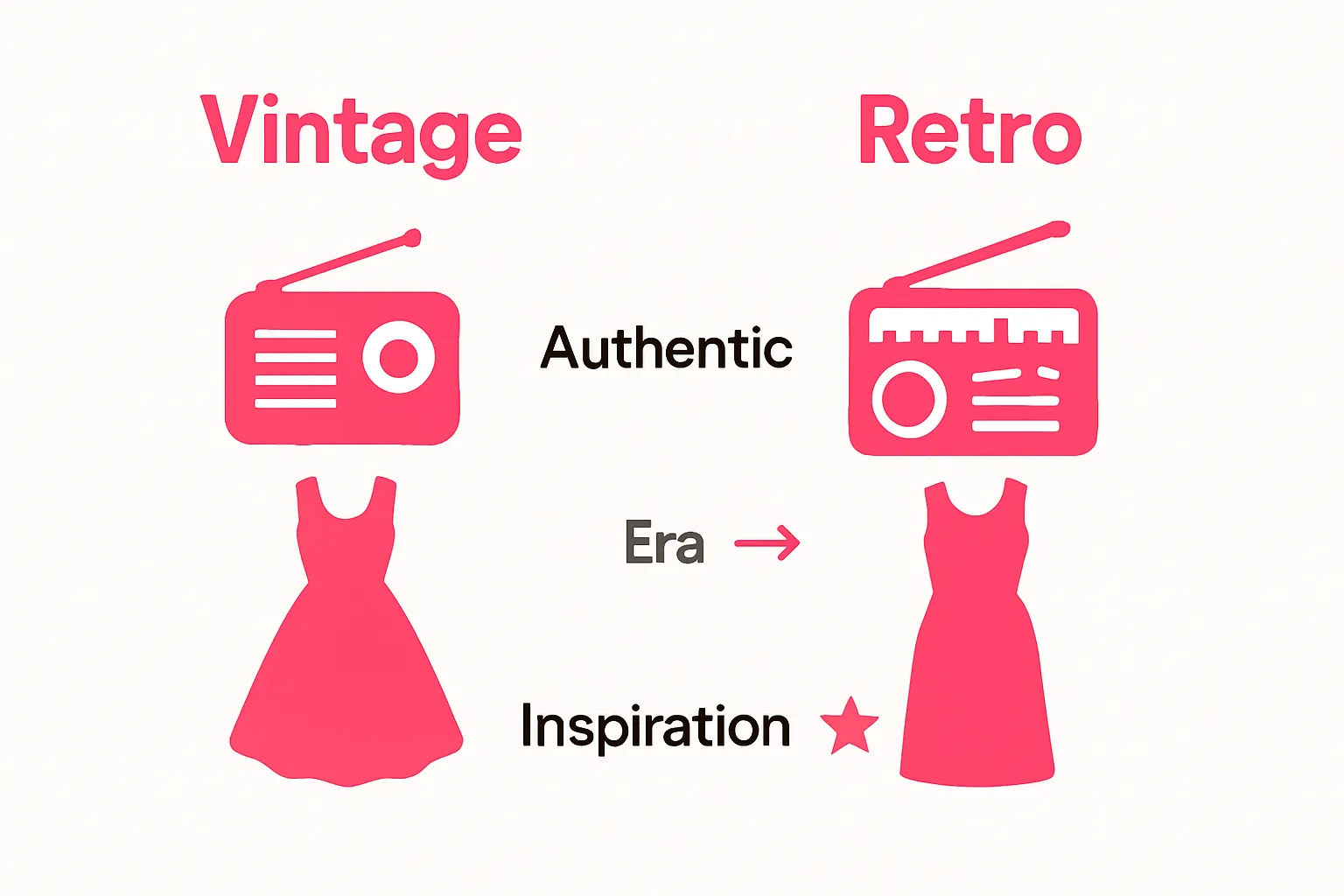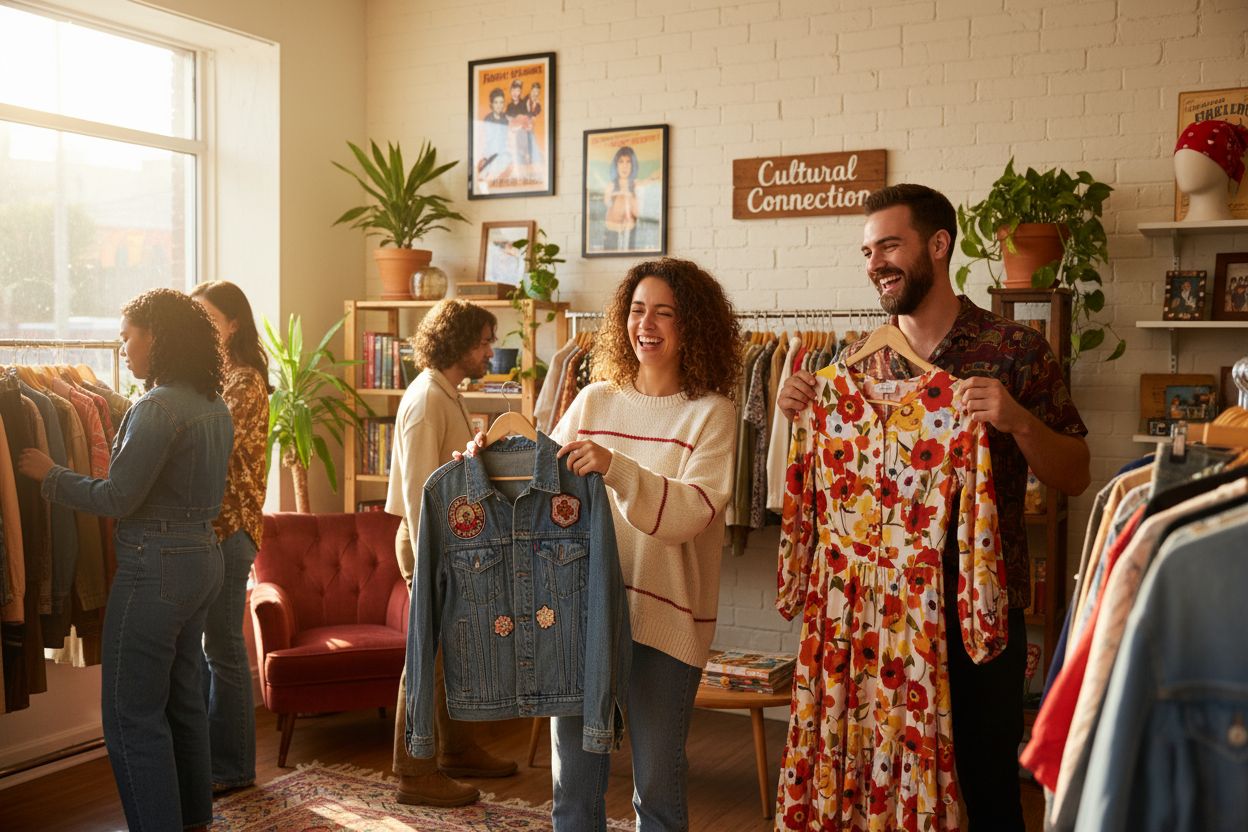
Understanding Why Vintage is Trending in Modern Culture
Share
Vintage is not just about old stuff gathering dust or quirky fashion thrown together. It is a cultural wave where nostalgia, style, and sustainability all merge. Just think, museum curators now classify anything 20 to 30 years old as vintage. That sounds like your childhood toys might actually be collectibles. But there is a twist. It is not really the age that matters anymore. Vintage stands for a whole new way people show personality, care for the planet, and connect to stories from the past. And that changes everything you thought you knew about the word vintage.
Table of Contents
- Defining Vintage: What Does It Mean Today?
- The Emotional Connection: Why Nostalgia Matters
- The Role of Sustainability in the Vintage Trend
- How Digital Platforms Fuel Vintage Collecting
- The Unique Allure of Vintage Gadgets and Fashion
Quick Summary
| Takeaway | Explanation |
|---|---|
| Vintage items embody cultural narratives. | These objects connect consumers with past generations and historical moments through their unique stories. |
| Nostalgia enhances emotional well-being. | Interacting with vintage items helps individuals reconstruct meaningful personal narratives, promoting psychological resilience and stability. |
| Sustainability drives vintage purchasing trends. | Choosing vintage represents a commitment to eco-conscious consumption by reducing waste and encouraging resource conservation. |
| Digital platforms revolutionise vintage collecting. | Online markets and communities provide unprecedented access and knowledge sharing, transforming how collectors interact with vintage culture. |
| Vintage gadgets showcase technological evolution. | Each device reflects historical advancements and aesthetic trends, serving as a tangible representation of innovation and design. |
Defining Vintage: What Does It Mean Today?
The term “vintage” has evolved significantly from its original historical context, transforming into a dynamic cultural concept that transcends simple age categorization. Museum curators define vintage as items typically between 20 to 30 years old, representing a specific era’s aesthetic, design philosophy, and cultural significance.
The Cultural Significance of Vintage
Vintage is more than just an age designation. It represents a complex intersection of nostalgia, craftsmanship, and historical appreciation. These items tell stories about past generations, technological innovations, and societal shifts. Whether it is a piece of clothing, a technological gadget, or a home accessory, vintage pieces carry an intrinsic narrative that connects contemporary consumers with historical moments.
Characteristics That Define Vintage
Understanding vintage requires recognizing several key characteristics that distinguish these items from mere old objects:
- Authenticity: Genuine representation of a specific time period
- Quality Craftsmanship: Superior manufacturing techniques typical of the era
- Design Uniqueness: Distinctive aesthetic that reflects its original time
Moreover, vintage items have become a statement of personal style and cultural awareness. Consumers are increasingly interested in understanding the difference between retro and vintage to curate collections that truly represent their appreciation for historical design and cultural significance.
The following table compares the defining features of Vintage and Retro items as discussed in the article, helping you distinguish between these two often-confused concepts.
| Attribute | Vintage | Retro |
|---|---|---|
| Age | 20-30 years old, from a specific past era | Made recently but imitates styles from past eras |
| Authenticity | Genuine, original from the era | Newly produced, not from the original time period |
| Design Philosophy | Reflects distinctive craftsmanship and culture | Inspired by historical designs |
| Cultural Significance | Holds historical value and stories | Focuses on aesthetic resemblance |
| Production Era | Created during the referenced historic period | Created in the present day |

The modern interpretation of vintage goes beyond simple nostalgia. It represents a conscious choice to celebrate design, sustainability, and individual expression through objects that carry historical and emotional value.
The Emotional Connection: Why Nostalgia Matters
Nostalgia represents a profound psychological mechanism that goes far beyond simple reminiscence, serving as a critical emotional bridge connecting past experiences with present identities. Psychological research reveals that nostalgic experiences provide emotional comfort and psychological resilience during periods of significant personal or societal transformation.
The Psychological Landscape of Nostalgia
At its core, nostalgia functions as an emotional regulatory strategy that helps individuals maintain psychological equilibrium. When people encounter vintage items or experience nostalgic moments, they are not merely remembering past events but actively reconstructing personal narratives that provide meaning, continuity, and emotional stability. This psychological mechanism allows individuals to connect fragmented life experiences into a coherent personal story.
Nostalgia as Cultural and Personal Expression
Vintage objects serve as powerful conduits for nostalgic experiences, enabling people to physically interact with memories and cultural histories. These items become more than mere possessions they transform into symbolic representations of personal and generational identities. By embracing vintage aesthetics, individuals communicate complex narratives about their cultural background, personal journey, and emotional landscape.
Key psychological benefits of nostalgic experiences include:
- Emotional Resilience: Strengthening psychological coping mechanisms
- Identity Reinforcement: Connecting personal history with present self
- Social Connectivity: Creating shared experiences across generations
Consumers are increasingly drawn to nostalgia-driven product experiences that offer more than aesthetic appeal they seek meaningful connections that transcend traditional consumption patterns. By selecting vintage items, individuals are essentially curating personal museums of memory, emotion, and cultural significance.

The Role of Sustainability in the Vintage Trend
Sustainability has emerged as a powerful driving force behind the contemporary vintage movement, transforming how consumers perceive and interact with products. Environmental research indicates that sustainable consumption practices are increasingly shaping consumer decisions, with vintage items representing a critical pathway towards reducing environmental waste and promoting circular economies.
Vintage as an Ecological Alternative
The vintage trend represents more than aesthetic appreciation it embodies a profound ecological philosophy of reuse, restoration, and responsible consumption. By choosing vintage items, consumers actively participate in reducing manufacturing demand, minimizing resource extraction, and challenging the disposable culture perpetuated by mass production. These items demonstrate remarkable durability, often outlasting contemporary manufactured goods and challenging the prevalent throwaway mentality.
Economic and Environmental Implications
Vintage consumption offers multifaceted sustainability benefits that extend beyond immediate environmental considerations. The practice supports economic models that prioritize longevity, craftsmanship, and resource conservation. Each vintage item represents a complex narrative of preservation, challenging contemporary consumer patterns dominated by rapid production and short product lifecycles.
This table summarises the key sustainability advantages of choosing vintage, as detailed in the article, providing a clear overview of how vintage supports eco-friendly lifestyles.
| Sustainability Benefit | Description |
|---|---|
| Reduced Manufacturing Waste | Less factory production needed, cutting down on industrial waste |
| Resource Conservation | Extends the useful life of products, saving raw materials |
| Carbon Footprint Reduction | Lowers emissions by reducing need for new goods and ongoing manufacturing |
| Longevity and Durability | Vintage items typically last longer and end up in landfill less often |
| Circular Economy Support | Encourages reuse, repair, and restoration over single-use consumption |
Key sustainability advantages of vintage consumption include:
- Reduced Manufacturing Waste: Minimizing industrial production demands
- Resource Conservation: Extending product lifecycles beyond initial manufacturing
- Carbon Footprint Reduction: Decreasing demand for new resource-intensive production
Consumers interested in integrating sustainable practices can explore lifestyle approaches that maximize vintage item utility and environmental consciousness. The vintage trend thus represents a nuanced intersection of personal style, environmental responsibility, and cultural appreciation.
How Digital Platforms Fuel Vintage Collecting
Digital anthropology research demonstrates that online platforms have fundamentally transformed collecting practices, creating global communities that transcend traditional geographical and temporal boundaries. Digital ecosystems have revolutionized how collectors discover, authenticate, and acquire vintage items, democratizing access and knowledge sharing in unprecedented ways.
The Digital Marketplace Revolution
Digital platforms have dismantled traditional barriers to vintage collecting by providing unprecedented accessibility and connectivity. Online marketplaces, social media platforms, and specialized forums enable collectors to connect with sellers and enthusiasts worldwide, creating intricate networks of knowledge exchange and transaction. These digital spaces allow individuals to explore rare items, compare prices, verify authenticity, and engage in specialized collecting communities from the comfort of their homes.
Community and Knowledge Democratization
Beyond transactional interactions, digital platforms have emerged as powerful knowledge hubs where collectors share expertise, historical context, and restoration techniques. Specialized forums, social media groups, and online repositories have transformed vintage collecting from an isolated hobby into a collaborative, global phenomenon. Collectors can now instantly access historical documentation, expert opinions, and peer reviews that were previously inaccessible.
Key digital platform advantages for vintage collectors include:
- Global Accessibility: Connecting collectors across international boundaries
- Real-time Authentication: Leveraging collective expertise for item verification
- Comprehensive Research: Instant access to historical and technical information
For enthusiasts looking to begin their vintage collecting journey, exploring retro tech collecting strategies can provide essential insights into navigating these digital ecosystems effectively. Digital platforms have not just facilitated collecting they have fundamentally reimagined how cultural preservation and historical appreciation occur in the 21st century.
The Unique Allure of Vintage Gadgets and Fashion
Design anthropology research reveals that vintage gadgets and fashion represent far more than nostalgic artifacts they are complex cultural expressions embodying technological evolution, aesthetic innovation, and social storytelling. These items capture moments of historical transition, representing technological milestones and cultural transformations that transcend mere material possession.
Technological Narrative and Design Evolution
Vintage gadgets serve as tangible timelines of technological progression, documenting the remarkable journey of human innovation. Each device encapsulates the design philosophy, engineering constraints, and aesthetic sensibilities of its specific era. From bulky transistor radios to early mobile phones, these artifacts tell intricate stories about technological limitations, creative problem solving, and the continuous human drive for technological improvement.
Fashion as Cultural Memory
Vintage fashion operates as a sophisticated form of cultural communication, where clothing and accessories become visual narratives of social movements, economic conditions, and personal identities. Unlike contemporary mass-produced fashion, vintage pieces carry unique craftsmanship, detailed construction techniques, and materials that reflect specific historical moments. Each garment represents a complex intersection of design, social context, and personal expression.
Key characteristics that make vintage gadgets and fashion compelling include:
- Unique Craftsmanship: Superior manufacturing techniques rare in modern production
- Historical Authenticity: Genuine representation of specific cultural periods
- Individual Expression: Items that communicate personal and generational stories
For enthusiasts eager to explore this fascinating world, discovering vintage technology offers an immersive journey into the rich tapestry of design, technology, and cultural evolution. Vintage items are not merely objects they are time capsules that connect us to our collective human experience.
Bring Vintage Inspiration Into Your Everyday Life
Vintage items are attracting so many people today because of their unique stories, the feeling of nostalgia they spark, and the reminder of quality and design from another era. Many South Africans want more than just ordinary gadgets. You want products that awaken memories and add personality to your surroundings. The challenge is finding these rare items that match modern needs while holding onto that emotional connection described in the article.
If you are ready to discover a world where past meets present, OnlyRetro has collected a wide variety of vintage-inspired tech accessories and home décor designed for South African tastes. Whether you are looking for smart gadget upgrades or one-of-a-kind gifts, you will find solutions that combine timeless style with modern function. Visit OnlyRetro today to shop our latest arrivals and begin building your own story with iconic retro looks. Let your next piece become part of what defines your personal style now.
Frequently Asked Questions
What is considered a vintage item?
A vintage item is typically defined as being between 20 to 30 years old and reflects the aesthetic, design philosophy, and cultural significance of a particular era.
Why is nostalgia important in vintage culture?
Nostalgia serves as an emotional bridge connecting past experiences with present identities, providing comfort and psychological resilience during transformative times.
How do vintage items contribute to sustainability?
Vintage items promote sustainability by reducing manufacturing demand, minimizing resource extraction, and embodying practices of reuse and restoration, thus challenging the disposable culture.
What distinguishes vintage from retro items?
Vintage items are genuine representations of specific time periods, while retro items are inspired by past styles but are often produced in the present, lacking the historical authenticity of vintage pieces.